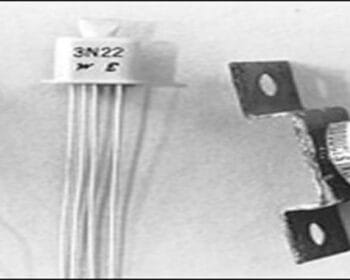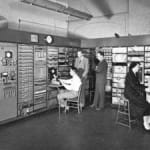IBM 650
Excerpt from an IBM press release, 1954 | http://www-1.ibm.com/ibm/history/ Called the IBM Magnetic Drum Data Processing Machine, it combines one of the advanced memory devices and the stored program concept of IBM’s big “701, recently announced with new high speed reading capacity in the conventional punched card equipment to achieve…
Regency TR-1
Regency Electronics produced the first commercial transistor radio, the Regency TR-1, it hit the consumer market in October, 1954. It featured four germanium transistors operating on a 22.5-volt battery that provided over twenty hours of life (tube radios with batteries only lasted several hours at best-ref). Several colors were initially…
Texas Instruments
Junction Transistor
IBM 701
Whirlwind Computer
Lyons Tea Company
First established in the last quarter of the nineteenth century by four entrepreneurs (Isidore and Montague Gluckstein, Barnett Salmon and Joseph Lyons), J. Lyons & Co. became one of the largest catering and food manufacturing companies in the world. From modest beginnings as supplier of catering to the Newcastle Exhibition…
Lyons Electronic Office (LEO)
England’s first commercial computer, the Lyons Electronic Office, solved clerical problems. The president of Lyons Tea Co. had the computer, modeled after the EDSAC, built to solve the problem of daily scheduling production and delivery of cakes to the Lyons tea shops. After the success of the first LEO, Lyons…


